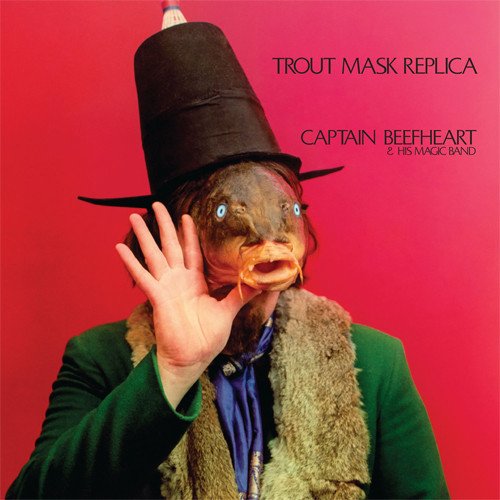WHAT’S THE DEAL WITH
TROUT MASK REPLICA?
Trout Mask Replica, the seminal album by Captain Beefheart and His Magic Band, stands as a musical monument that defies categorization. Released in 1969, this enigmatic and avant-garde work remains influential and revered to this day. Its raw, discordant soundscapes, unconventional song structures, and daring musical experimentation challenged the norms of popular music, paving the way for countless artists to break free from conventional constraints. Yet despite all of the reverence that it has garnered today, when it was released it was violently dismissed by the establishment tastemakers and compared to barbed wire. In this review, we delve into the essence of Trout Mask Replica and explore its enduring influence on the music world.
First let’s get it out of the way; if you haven’t listened to Trout Mask Replica before, it sounds like barbed wire. The album's musicality is challenging and dissonant, characterized by angular guitar riffs, intricate time signatures, and erratic vocal deliveries. Songs like "Frownland" and "Dachau Blues" assault the senses with their disorienting melodies and fragmented structures. The lyrics, often abstract and filled with cryptic metaphors, add an additional layer of complexity, drawing listeners further into Beefheart's perplexing universe. The album, recorded in just six hours, captures the raw essence of creative energy and the uncompromising vision of its mastermind.

While it received mixed reviews upon its release, the album garnered a dedicated cult following over time, attracting musicians and fans hungry for innovation and artistic integrity. Its influence extends beyond the realm of rock and has seeped into avant-garde, punk, and experimental music scenes. Artists like Tom Waits, Sonic Youth, and Frank Zappa have all acknowledged the profound impact of Trout Mask Replica on their own work.
It also continues to resonate with subsequent generations and remains challenging and unconventional, even by today's standards. It’s dissonant, each instrument sets of on their own creative expeditions that at times coalesce and at other times create chromaticism. Its like speeding in almost complete darkness with shafts of light bringing the landscape into focus only for the dark to abruptly cut in; by the time you notice something its already gone.
While it received mixed reviews upon its release, the album garnered a dedicated cult following over time, attracting musicians and fans hungry for innovation and artistic integrity. Its influence extends beyond the realm of rock and has seeped into avant-garde, punk, and experimental music scenes. Artists like Tom Waits, Sonic Youth, and Frank Zappa have all acknowledged the profound impact of Trout Mask Replica on their own work.
It also continues to resonate with subsequent generations and remains challenging and unconventional, even by today's standards. It’s dissonant, each instrument sets of on their own creative expeditions that at times coalesce and at other times create chromaticism. Its like speeding in almost complete darkness with shafts of light bringing the landscape into focus only for the dark to abruptly cut in; by the time you notice something its already gone.
Modern artists like Radiohead, The Mars Volta, and Animal Collective embrace experimentation and unconventional song structures, paying homage to the album's groundbreaking legacy. These artists incorporate elements of dissonance, unconventional time signatures, and abstract lyricism, mirroring the spirit of creative exploration epitomized by Captain Beefheart and His Magic Band. Furthermore, the album's enduring influence can be felt in the broader landscape of popular music. Artists like Björk, St. Vincent, and Flying Lotus, known for their boundary-pushing and genre-blurring approaches, draw inspiration from Trout Mask Replica's fearless attitude towards sonic innovation.
In conclusion, Trout Mask Replica's influence in contemporary music is undeniable and pervasive. Its impact can be heard across genres, from experimental and punk to alternative and indie rock. The album's spirit of audacity, its rejection of commercialism, and its dedication to pushing the boundaries of musical expression can be thought of as the concentrate from which others have sampled and mixed with their own sensibilities and as such continues to live through the ever changing musical landscape.


